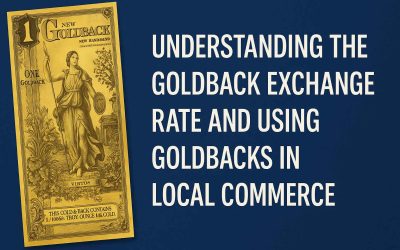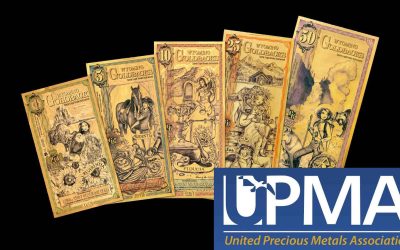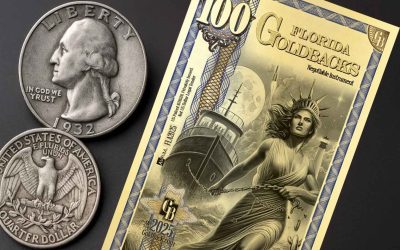As fiat currencies continue their slow decline in purchasing power, more Americans are turning to a more tangible, historically rooted store of value: gold and silver. States like Utah (2011), Oklahoma (2014), Texas (SB 2097 in 2017), Wyoming, and now Florida (effective July 1, 2026) have passed bold laws recognizing U.S.‑minted gold and silver coins as legal tender and removing sales taxes.
These developments signal a renaissance of sound money, offering citizens real financial sovereignty rather than dependence on the whims of fiat. Let’s dive into why this is not just symbolic—but profoundly advantageous for everyday people.
1. Shielding Against Currency Depreciation
Fiat currency, untethered from gold and silver, suffers from inflation by design. Since leaving the gold standard, the U.S. dollar has lost over 87% of its purchasing power. In contrast, gold has rapidly surged in value—about 29% year-to-date, trading near an all‑time high of $3,500 per ounce in April 2025.
When Wyoming’s treasurer purchased gold in early 2025 at ~$2,700/oz, prices quickly rose above $3,300, yielding an immediate 20 %+ gain—illustrating clearly that gold responds to fiat devaluation .
By allowing families and businesses to save or transact in gold and silver, states empower people to preserve purchasing power and hedge against inflation.
2. Restoring Real Value in Everyday Transactions
Making gold and silver legal tender isn’t only about monumental wealth—it’s about practical purchasing power. Silver, often overlooked, is recognized by states like Colorado and Missouri for smaller everyday transactions.
Imagine paying for groceries, rent, or utilities in silver coins—each piece representing tangible wealth, immune to inflationary debasement. It broadens access to precious metals and decentralizes monetary control, letting individuals decide what constitutes “real value.”
3. Constitutional Alignment & Economic Freedom
The Constitution explicitly permits states to make “gold and silver Coin” legal tender (Art I, Sec 10). Utah embraced this constitutional heritage in 2011, declaring U.S.‑minted gold and silver coins legal tender and freeing them from capital gains taxes.
Florida’s newly signed HB 999 follows suit—setting purity standards (99.5 % gold, 99.9 % silver) and enabling government entities to handle metals electronically. It’s not radical—it’s a restoration of constitutional intent and economic self-determination.
4. Diversification: A State-Level Wealth Strategy
Wyoming’s Gold Act mandates the state buy and store $10 million in gold by 2026. The move isn’t merely symbolic; it entrenches diversification, bolstering the state treasury from fiat collapse risk.
When combined with similar steps in Texas, Missouri, Utah, and soon Florida, there’s potential to create a network of state-level reserves anchored in intrinsic value—not dependent on shaky Fed policy.
5. Reinvigorating Market Trust & Local Commerce
Faith in paper money is fracturing. By deeming gold and silver as legal tender, states signal confidence bolstered by centuries of global acceptance.
Businesses in Florida are already preparing—the Tampa “Coinacopia” specialty shop is excited about the shift, calling it “real money” that holds value better than the dollar. Expect more merchants to follow once there’s regulatory clarity and infrastructure for weighing and validating coins.
6. Counteracting Fiat Overreach & Political Risk
The power to print money has led to deficits, inflation, and periodic currency devaluations—eroding middle‑class wealth. States like Florida and Wyoming view gold and silver legal tender laws as tools to:
- Break federal “money monopoly”
- Shield residents from inflationary policy
- Assert economic independence
This underpins a broader narrative: sound money fosters individual liberty, limits central control, and empowers citizens.
Challenges & The Goldbacks Connection
Practical challenges remain: coin authentication, pricing volatility, and limited acceptance are real hurdles . Ease-of-use solutions like Goldbacks—fractional, polymer‑encased gold “banknotes” used in Utah, Wyoming, New Hampshire, Florida and more—help bridge gaps.
Goldbacks make spending gold in everyday life feasible, offering a micro-denominated system tied to real gold, not just fiat decimals.
A Vision for the Future: America with Sound Money
Here’s what an America embracing gold and silver legal tender might look like:
- Preserved purchasing power for savers, insulated from inflation cycles
- Competitive currency ecosystem—dollar, gold, silver, and digital complementarities
- Stronger state treasuries as users hold wealth in assets with intrinsic value
- Economic freedom returning to individuals, not central banks
The move to reintroduce gold and silver as legal tender isn’t nostalgia—it’s necessity. As states like Wyoming, Florida, Utah, Texas, Missouri, and more blaze trails, they’re crafting a financial future where citizens, not central bankers, decide what holds value.
For readers of GoldbackInfo.com, this resurgence is not just about precious metals—it’s about preserving freedom, purchasing power, and placing real value back into American wallets.
Let fiat inflation’s erosion be countered—not with more debt, but with money grounded in centuries of trust.
Disclaimer: Royal Leo Holdings, LLC and GoldbackInfo.com are not registered financial advisors. All content on this site is provided for informational and educational purposes only and represents our own opinions—not financial advice. You should consult a qualified professional before making any investment decisions.








0 Comments